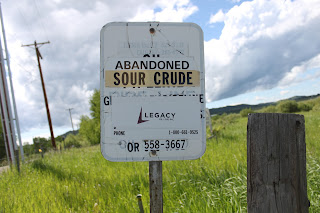Keystone Pipeline Decision Delayed Until Pres. Elections Spotlight Shifts to Great Bear Rain Forest
By B. McPherson
The decision to delay the building of the controversial Keystone XL pipeline until after the US presidential elections next year may doom the project. Opposition to the building of the oil pipeline which would connect the oil fields of Alberta to refineries in Texas has been loud and growing. The proposed route of the Keystone pipeline would take it across the Nebraska Sandhills, an environmentally sensitive treasure. Any breaches in the pipeline could easily contaminate the Ogllala aquifer. This aquifer is the supplier of water to much of the Midwest, both cities and aqriculture.
Those that support the building of the $7 billion project point out the economic benefits of the pipeline. Many people would be employed in good paying jobs; oil from Canada is a stable source; there could be a reduction in oil tankers plying the Gulf of Mexico.
At first glance, this looks like a victory for environmentalists. It is not. It puts the focus on a different environmental treasure – the Great Bear Rain Forest – in British Columbia. There are ongoing hearings in Canada regarding the building of the Gateway Pipeline that would transport petroleum from Alberta to the Pacific coast.
Canada will sell its oil. The world is ready to buy it.
"It may mean that we may have to move quickly to ensure that we can export our oil to Asia through British Columbia." Canadian Finance Minister Jim Flaherty
The Great Bear Rain Forest was featured in the August edition of National Geographic Magazine. It is home to a diverse range of plants and rare animals including the fabled spirit bears, creamy coloured black bears – Kermode bears. National Geographic bills it at the wildest place in N. America and refers to the Gateway project as a “pipeline through paradise”.
In addition to putting the rain forest at risk, tankers would have to thread their way through a maze of islands and fiords to fill at the pipeline terminus. This is the area where a provincial government ferry, Queen of the North, ran aground and sunk five years ago. Oil from its bilges still surfaces in the area. Currently, oil tankers from Alaska stay well away from the BC coastline as a precautionary measure to protect it from accidental contamination.
There are those that say that Alberta’s oil sands produce dirty oil. Of course they do. All oil is dirty. All oil has the potential to contaminate and spoil our environment. The question is: what are we going to do about it? Are we going to reduce our demand for it or are we going to mouth our platitudes about the environment and carry on with our wasteful habits? It really is up to us to change things.

Glad there is a tenuous thread of hope here . . .
ReplyDelete